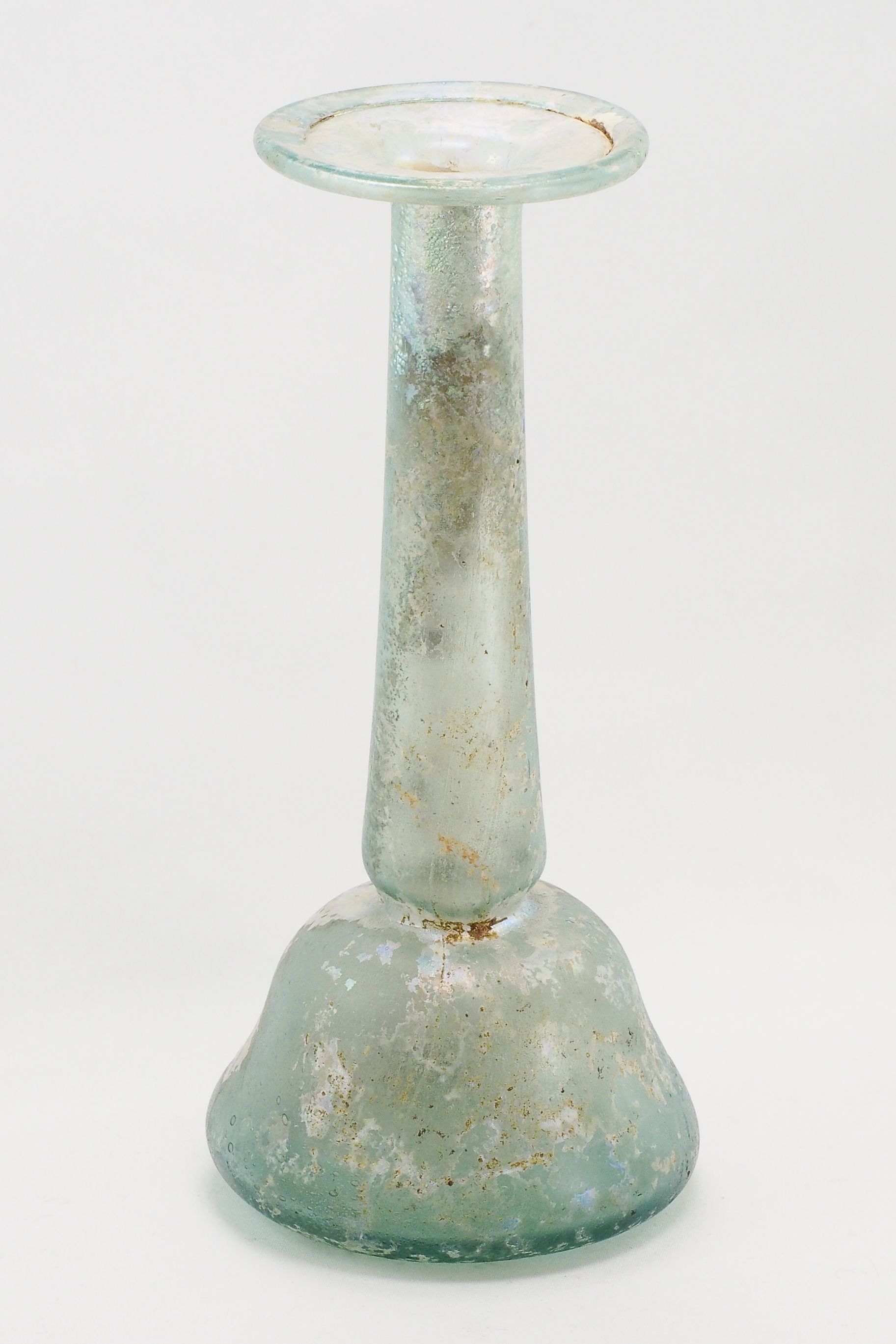Candlestick Unguentarium
Name/Title
Candlestick UnguentariumEntry/Object ID
11NE-Mi25-163Description
The rim is wide with a tubular ledge which is folded slightly inwards, and folded outwards to create a sharply outturned lip. The long cylindrical neck widens at the bottom then constricts at the junction with the body. The body posses another slight constriction at its center, creating the constricted waist of the bell-shaped body. The base is deep and concave. The vessel is intact with some iridescence.Use
Perfume VesselContext
Perfume vessels began in a piriform shape, in the late first century CE. The shape evolved, developing a long neck with a trapezoidal body, thus called the "candlestick bottle". The candlestick shape persisted until the third century CE. This vessel also follows Isings form 82 A2. The narrow mouths of unguentaria are thought to be suited to holding liquids such as water, wine, or even more viscous substances like oil or honey. However, with scientific analysis it has been found that unguentaria also stored pigments and pastes for cosmetic or medicinal purposes. They were also used to hold balms or perfumes. Ancient textual sources also indicate that unguentaria were used to hold dangerous substances (magical or toxic) for ritual purposes. However, their main purpose was to hold perfumes in everyday use or 'holy' oils for funerary rituals.Made/Created
Date made
100 CE - 300 CETime Period
Roman ImperialEthnography
Culture/Tribe
Near Eastern - Syro-Palestine

